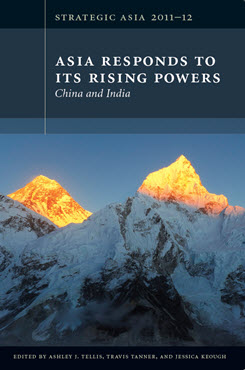Japan, India, and the Strategic Triangle with China
This chapter examines Japan’s relations with and strategies toward China and India.
EXECUTIVE SUMMARY
This chapter examines Japan’s relations with and strategies toward China and India.
MAIN ARGUMENT
Though Japan is declining in relative power, its strategic response to the rise of China and India will have a significant impact on the balance of power in Asia. After years of distant relations, Japan is increasingly turning to India as a counterweight to China, encouraging Indian participation in the East Asia Summit and moving forward on security and nuclear cooperation talks. Japanese corporations are also shifting future investment plans from China to India (and other developing Asian economies) to hedge against growing political and economic risk in China. The Japan-India relationship is still hampered by New Delhi’s lingering Nehruvian socialism and nonalignment ideology and Japan’s own anti-nuclear allergies and political malaise, but the trend of closer alignment will continue to increase the strategic equilibrium in Asia as China rises.
POLICY IMPLICATIONS
- External balancing strategies are insufficient to prevent further waning of Japan’s influence in Asia; economic reform and revitalization, defense spending increases, and more credible political leadership are also needed.
- Japan must work on establishing stable political linkages and crisis management channels with Beijing.
- The U.S. should encourage closer Japan-India alignment by realizing calls for an official trilateral strategic dialogue and enhancing trilateral military exercises, while reiterating U.S. interests in improved relations among all the region’s powers, including China.
- The tragic earthquake, tsunami, and nuclear disasters of March 2011 will put downward pressure on Japan’s economic and political performance in the near term but could be positively transformative in the medium to long term.
Strategic Asia
The Strategic Asia annual edited volume incorporates assessments of economic, political, and military trends and focuses on the strategies that drive policy in the region. Learn more about Strategic Asia.


